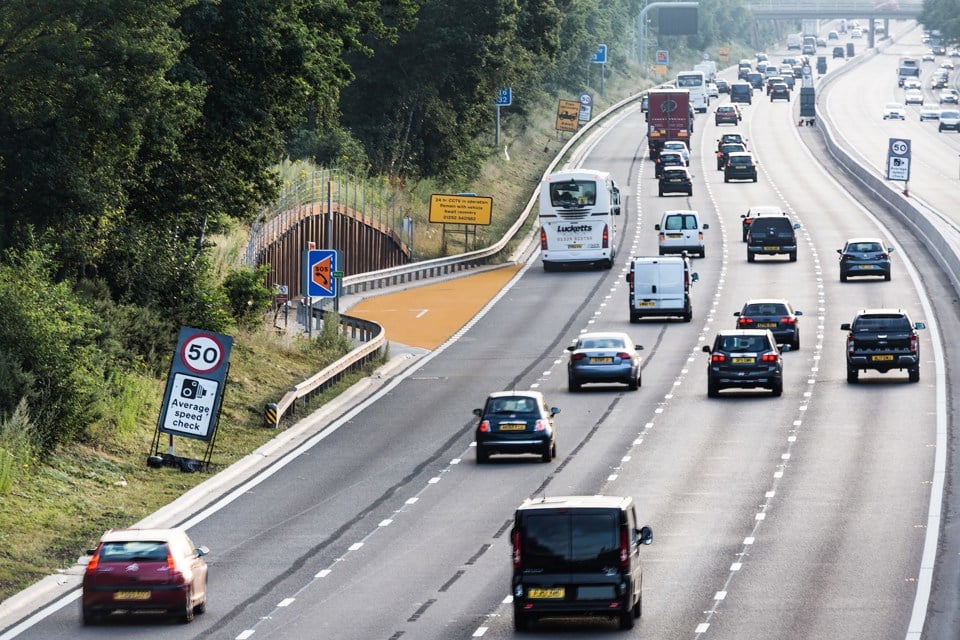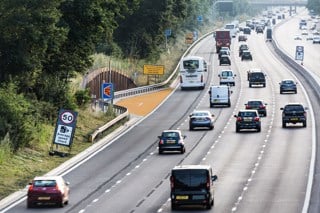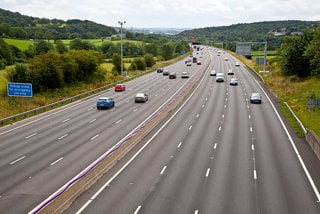Safety improvement to existing smart motorways will be fast tracked and no new ‘all-lane running’ roads will be allowed to open without radar technology to detect stopped cars.
The radar technology has been trialled on the M25 to detect stationary vehicles and it has been introduced to stretches of the M3 and M20, over the past 12 months. It is currently being installed on the M1.
Nick Harris, acting chief executive at Highways England, says that going forward, it will ensure “every new section of smart motorway has this technology in place when it opens”.
Highways England had already committed to ensuring the system was fitted on all lane running (ALR) smart motorways by March 2023. It has now committed to complete that work six months early, by the end of September 2022.
It has also pledged to upgrade special cameras 10 months earlier than planned, so that they can be used to spot and prosecute motorists ignoring red X signs and illegally driving down closed lanes.
Furthermore, it says it will install around 1,000 additional approach signs six months earlier than planned, alerting drivers to their nearest place to stop in an emergency.
“We recognise drivers value emergency areas,” Nick Harris, Highways England
Work to update the Highway Code to provide more guidance about driving on smart motorways will also be bought forward and is due to be published this year.
Smart motorway progress report
Highways England, which manages the country’s strategic road network, has published a first-year progress report on smart motorways, setting out the headway it has made against an action plan published last year to boost safety.
The report claims all lane running motorways – which have no hard shoulder and feature emergency refuge areas (ERAs) – are safer than other major roads.
Drivers on a conventional motorway are 33% more likely to be involved in a fatal accident than drivers on a smart motorway, it says.
In the report’s foreward, Harris argued: “All road journeys involve risk, but the chance of death on smart motorways is less than on any other major road.
“It is less than on conventional motorways, and it is far less than on any strategic road network A-road.”
Smart motorways, which use technology to maintain the flow of traffic and give information on overhead gantries, have existed in England since 2002.
The all lane running version – which involves opening the hard shoulder permanently to drivers – began in 2014.
Smart motorway deaths
The number of people being killed on motorways without hard shoulders increased each year from 2015 to 2019 and totalled 39 deaths.
In England, there were 1,489 fatal casualties in 2019 with 1,279 (86%) of them taking place outside of the strategic road network.
Out of the 210 (14%) fatalities on the strategic road network, 125 (8%) took place on A-roads and 85 (6%) on motorways.
Out of the total fatalities in England in 2019, 15 (1%) took place on motorways without a permanent hard shoulder in comparison to 70 (5%) on motorways with a permanent, conventional hard shoulder.
The increase in fatalities in 2019 was accounted for by so-called dynamic hard shoulder motorways, where the hard shoulder operates only part-time. All these motorways are being withdrawn and replaced with all lane running motorways, say the Department for Transport (DfT).
“We recognise drivers value emergency areas,” wrote Harris. “We have made them more visible to drivers by turning them orange, so they can be seen more easily, and we’ve improved the frequency of signage to them.
“We will accelerate our work to provide more signage showing the distance to the next emergency area.”
Highways England has also launched a national public information campaign about what to do in a breakdown situation on a high-speed road.
Transport secretary Grant Shapps said: “Despite the data showing that fatalities are less likely on all lane running motorways than on conventional ones, this doesn’t mean all drivers necessarily feel safe on them.
“So-called smart motorways started to be built in 2001 and I am determined to ensure that technology and exacting standards are in place.”
Shapps has asked the Office of Rail and Road (ORR) to undertake an independent review of the available safety evidence to ensure the agency’s conclusions are robust.
Harris said he welcomed the move and would support the ORR in its work.
Smart motorway changes welcomed
Edmund King, AA president, said it was “encouraging” that progress has been made to make smart motorways safer.
“The objective should be to create the safest roads we can,” continued King. “The number one improvement advocated by the AA and our members is to increase the number of emergency refuge areas and retrofit them to older schemes to ensure they are placed at approximately 0.75 miles apart.
“More ERAs, together with improving the accuracy of stopped vehicle detection radar, should be the urgent priorities.”
Despite the reassurance that smart motorways are ‘safer’ than traditional motorways, a recent IAM members poll showed that more than 80% feel less safe on a smart motorway.
Tony Greenidge, IAM RoadSmart CEO, said: “We believe that high quality and frequent education is needed to deliver ongoing reassurance to drivers and riders.
“A new education course and swift penalties for those drivers who put others at risk is also being proposed, to be effective this must be backed up by more traffic police to ensure the new powers are used. The plans to automatically enforce Red X violations from 2022 are much needed.”
Mary Williams, chief executive of road safety charity Brake, added: “Highways England must be certain, based on hard evidence, that every change it makes to our motorway network helps prevent such a tragedy, and after making a change, it must keep a close eye on safety and undertake a full review of the causation of any crash.”























Login to comment
Comments
No comments have been made yet.